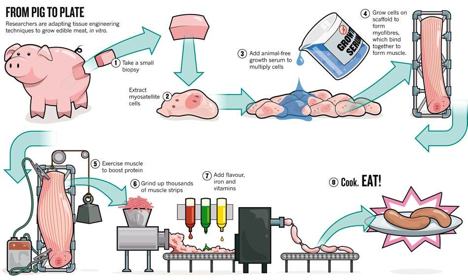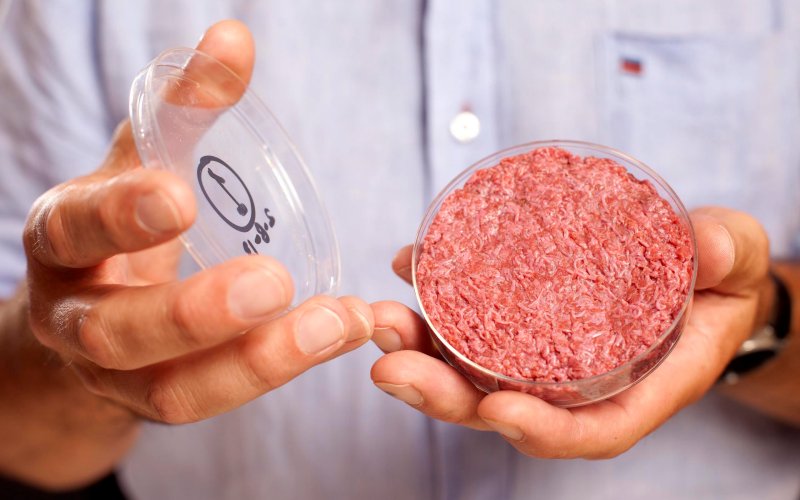Something new is happening in the science world, and it’s completely changing the way we think about vegetarianism and future meat consumption in general. Currently, the livestock industry is causing harmful effects on the environment by promoting deforestation, increasing gas emissions, and decreasing the value of agriculture. Scientists are trying to combat this by creating meat in laboratories without harming or killing any animals, and so far they have been successful.
Here’s how it works: Muscle cells are taken painlessly from the animal, say, a pig. Those cells are then put into a culture medium to feed them and placed into a scaffold that acts as a structure into which they will grow. A bioreactor starts the reaction that makes it all happen, and in time, those original muscle cells turn into a piece of animal meat we call pork. (Consult diagram below for more info)

Photo from http://sitn.hms.harvard.edu/flash/2011/issue90/
So what are the implications of this “test tube meat”? For those vegetarians out there who choose to not eat meat for animal welfare purposes, no animals are harmed in the process of making in vitro meat. Additionally, the ability to create meat in laboratories has the potential to benefit the environment. It may be able to decrease deforestation rates and pollution, and save thousands of animals from being slaughtered. Also, for humans, consuming meat would be safer. The growing of meat in laboratories eliminates the risk of being contaminated with the diseases animals may carry.
One of the reasons we don’t currently have access to in vitro meat is because some of the culture medium ingredients required to grow the cells into meat may use animal byproducts. Although other non-animal ingredients are being tested, this arguably defeats the purpose of growing in vitro meat to begin with. This process is also very expensive, requiring millions of dollars in funding. However, technology is doing great things, and scientists continue to make breakthroughs in the study of in vitro meat. Meat of the future is becoming better for the environment, and someday, some of those who choose not to eat meat may be able to do so again.

Photo by The Daily Beast
If you’re interested in learning more about vitro meat, check out the video below that explains the process, or visit science in the news.

